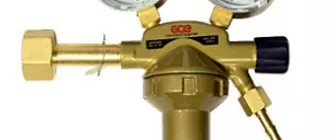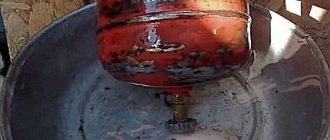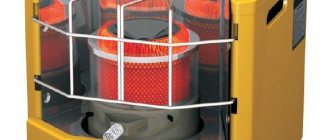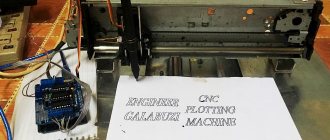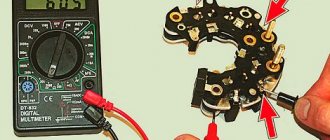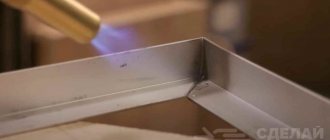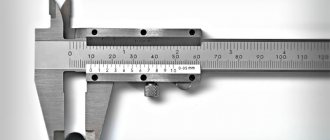Gas cylinders are durable products that can withstand high internal gas pressure. They are manufactured in factories specifically for pressure parameters. The cylinders themselves rarely fail. The most vulnerable point in their design is the valve through which the gas exits the container. There is no point in repairing this part; it is simply replaced with a new one. Replacing the valve on a gas cylinder is a simple, but responsible task.
First acquaintance with gas cylinders
A modern gas cylinder complies with GOST 949-72 and is a durable all-welded element made of carbon or alloy steel. According to the standard, the thickness of the cylinder walls cannot be less than 2 millimeters. In order for the gas inside to press equally on the upper and lower parts, they are made concave and convex. The cylinders themselves, depending on the substance in them and its quantity, can have different sizes, shapes and colors. But one thing remains unchanged - any gas cylinder must have passport data assigned at the factory. In the upper part there is a neck equipped with a thread into which the valve is inserted.
Operating rules
Welding is a particularly dangerous type of production activity, therefore there are rules for the transportation and storage of oxygen:
- Strict marking and painting in the appropriate color.
- The initial pressure inside the container is 150 atm, maximum use is allowed up to 1 atm, the valve is closed, and the cylinder is sent for refueling.
- Full consumption is prohibited, since the oxygen station must determine its type.
- Transportation only on racks with shock absorbers, where each container is securely fastened.
- In production and construction sites, containers are transported only on trolleys.
- When used, the cylinder is located no closer than 5 m from the welding site.
- It is forbidden to keep containers in direct sunlight for a long time.
- It is necessary to close the cylinder from exposure to precipitation.
- The reducer automatically regulates the gas supply; it must be kept clean.
Periodically, all similar containers undergo certification: the initial check is upon receipt, and then when refueling at an oxygen station.
The following details should alert you when purchasing a cylinder
- Valve malfunction - the flywheel does not turn or there are other problems;
- Corrosion, dents or other damage on the body of the cylinder and valve part;
- The inspection date has expired;
- You can feel the gas in the air;
- A crooked or damaged cylinder shoe;
- There is no plug on the fitting.
Important! Under no circumstances should the contents of the gas cylinder be completely used. During cessation of operation, the residual pressure inside should remain at 0.5 kgf/cm2.
Indications for replacement
In order to send the cylinder in time for repair work and performance testing, perform an external inspection and pay attention to the following:
- Is the shut-off valve flywheel spinning?
- on the body and valve of the cylinder, whether mechanical deformation is visible in the form of abrasions, cracks and traces of corrosion damage;
- validity of technical inspection data;
- feeling the smell of the gas-air environment next to the cylinder;
- skewed or damaged shoe at the base;
- absence of a plug on the fitting.
Before replacing the valve of a gas cylinder with your own hands, the user needs to be able to not only externally determine the malfunction of the cylinders, but also identify counterfeit products. All cylinders that are permitted for use in Russia must be produced in a certified production facility and comply with GOST requirements. This can be easily determined by examining a metal plate on which the main text is located on 2/3 of its area, and all letters must be the same height, equal to 6 mm.
- Permissible pressure in MPa;
- test pressure in MPa; volume in liters;
- factory number;
- release date “MM.YY.AA”, where M is the month, G is the year of manufacture, A is the year of the next inspection;
- empty tank weight in kg;
- mass of container with gas in kg;
- the next check is in the “R-AA” format, where “R” is the stamp of the state verifier, A is the year of validity of the certification.
Valve device
As we said above, the valve in a propane cylinder is practically no different from what is on a container containing oxygen or other gas. They all have approximately the following structure:
- A durable cylinder made of steel with three holes. Each of these holes is threaded and is intended for screwing onto the cylinder, mounting a plug and a valve nut fitted in the upper cylindrical part;
- A handwheel mounted to the valve stem via a nut;
- Locking device with a rod and a bypass valve. This valve transmits torque from the flywheel. The pressure that this part can withstand varies from 15 to 190 atmospheres;
- Gaskets designed to maximally seal the connections between all parts of the assembly.
Leak test
To check the tightness of shut-off valves, gas is pumped into the vessel under pressure using a compressor or two cylinders are connected with a hose - the one being tested (empty) and the other filled with gas. The test vessel is filled with gas up to 2 atm, control is carried out using a pressure gauge. Apply soap foam to the threaded connection and open the valve slightly. If soap bubbles do not appear, then there are no leaks, otherwise you need to re-tighten the valve and tighten the nuts.
The test is performed several times in a row, in the open and closed positions, using new foam. It is strictly prohibited to check the tightness with a match or lighter - due to the risk of fire and explosion of the gas-air mixture. It is important to know about the dangerous mistake that users make with left-handed gearbox threads; if, out of habit, they are tightened incorrectly, then leaks will become larger.
DIY Gas Valve Troubleshooting Guide
The cylinder itself is solid, and it’s unlikely that anything will break there. Therefore, the majority of malfunctions concern gas valves.
Procedure:
- Repairs are carried out in a well-ventilated area;
- We open the shut-off assembly to allow the remaining gas to escape;
- To turn the valve manually or with a gas wrench, you need to warm up this element. In this case, there is no danger, since the cylinder contains only gas vapors, and not their mixture with air, which is explosive in the first place. The only thing that needs to be monitored is moderate heating of the structure, since overheating can increase the pressure in the cylinder. The point of warming up is that the metal expands and it becomes possible to unscrew the valve even manually, or with a slight lever force in the form of the same gas wrench;
- After removing the element, the conical fitting is sealed - a sealant or fluoroplastic tape is applied to it;
- A new valve is installed, after which the fact and time of repair are entered into the cylinder passport. Installation is carried out with a special torque wrench, which makes it possible to correctly dose the forces and not break the thread. The maximum pressure allowed in this case is 480 Nm for steel and 250 for brass valves;
- Having removed the valve from the cylinder, it is necessary to drain the condensate from it, if we are talking about propane-butane, which we widely use. This procedure is practically never performed by anyone, despite the fact that it is extremely desirable. However, it is necessary to drain it away from residential buildings, since this condensate has an extremely unpleasant odor.
Important! Working with gas cylinders is potentially dangerous. Moreover, there is a strict ban on removing taps in artisanal conditions. Remember that it is best to entrust this matter to professionals, and you should proceed with independent actions only if you are confident in your abilities, ready to strictly follow the rules, and, of course, the urgency of repairs. If there is even the slightest opportunity to transfer this task into the hands of a specialist, it is strongly recommended to take advantage of it.
In general, the gearbox, which is non-separable, must be replaced every six years. As for the hoses, they must be reinforced and subject to inspection no earlier than once every six months when replacing the cylinder.
Precautionary measures
During any operations with gas equipment, the user must follow the operating and maintenance rules and take all precautions for personal safety, protection of surrounding people from injury, as well as keeping the equipment in good condition.
Basic safety requirements:
- It is prohibited to use vessels with expired inspection dates and with obvious damage to the composite body or shut-off valves.
- Install the cylinder exclusively in a vertical position.
- Storing vessels with a volume of more than 5 liters in residential premises is prohibited. Minimum distances to utilities in the house: from the cooking stove - 0.5 m, from the firebox door - 2 m, from the wall - 0.30 m, from electrical wiring - 1.0 m.
- When storing vessels, they are firmly secured with clamps and protected from sunlight and heating devices. The distance to the radiator must be at least 1 m, and from open heating sources - 5 m; when placing protective screens, it is reduced to 0.5 m.
- Heating of the valve fittings is allowed after the gas has completely drained from the cylinder and the tap has been closed.
- Valve replacement begins after the pressure inside and outside the vessel has equalized.
- Unscrew the flywheel very slowly in order to prevent its electrification, sparks and explosions.
- There can only be 1 locked GB in a room.
- Residual gas may only be drained in an open area.
- It is prohibited to heat the cylinder to increase the pressure of the medium and to repair faulty vessels with gas residues. It is prohibited to leave broken gas cylinders in places where people are constantly present.
- It is necessary to periodically check the operation and tightness of the valve.
- In the event of a fire, extinguishing is carried out with fire extinguishers OU-2A, OHP-10 and stove mixture, and the Ministry of Emergency Situations is also urgently called.
- If you are poisoned by combustion products, you must go to the hospital or call an ambulance at home.
- If gas leaks are detected, the taps must be immediately turned off, the room must be ventilated, and an emergency call must be made to the Ministry of Emergency Situations.
- It is forbidden to use the entire contents of the cylinder; the residual pressure must be at least 0.5 kgf/cm².
Screwing in new shut-off valves
There is an unspoken ban on carrying out such work, especially at home, but sometimes there is simply no other choice but to carry out the replacement yourself
It is important to remember that replacing a gas cylinder valve with your own hands requires a person to adhere to maximum safety precautions, since the health and lives of other people directly depend on his actions
First of all, it is necessary to monitor fire safety. You should not open the valve suddenly; also, when replacing, you need to make sure that there are no other cylinders in the room. Situations when it is necessary to replace a valve are not uncommon. Despite all the apparent complexity, the replacement procedure is quite simple and accessible.
Replacing the valve on a gas cylinder should be done without haste, since it is necessary to ensure compliance with the technical data of the element. The main indicators are as follows: propane valve - operating pressure up to 1.6 MPa. Replacing the valve on a gas cylinder yourself requires that the pressure does not exceed these values.
Before tightening the valve, all connected parts must be degreased to prevent clogging of the locking mechanism. To do this, you can use a cloth with regular detergent or moistened with white alcohol. After this, rinse the surfaces with plain water and allow them to dry.
A new valve is never screwed to a cylinder with bare threads. It is imperative to use a sealant: special thread compound or fluoroplastic fum tape. They are applied to the lower fitting and only after that the valve is tightened.
The thickness of the gas fum tape is greater than sanitary tape and is 0.1 - 0.25 mm, and its reel should be yellow. The tape is wound with tension in 3-4 layers. It is better to twist it once again when it breaks than to make the seal loose.
It is advisable to tighten the valve with a torque wrench. Steel shut-off valves are screwed with a maximum force of 480 Nm, and brass valves - 250 Nm. After clamping the valve, you can proceed to subsequent steps to test the tightness of the resulting connection.
According to the rules of safe operation, independent installation of valves on gas cylinders is strictly prohibited. If the situation is hopeless, you can very carefully try to replace the device yourself. Technically, the work itself is not difficult, but breaking the seal of the cylinder is always fraught with risk.
To begin with, it is worth considering the process of replacing the valve by a technician at a specialized enterprise. Removal of the fittings is carried out using a cylinder valve wrench. A dynamic key is used for installation. The tightening force should not exceed 250 N for brass fittings and 480 N for steel fittings. Before delivery of the gas cylinder, the threads are sealed with paint.
In handicraft conditions, you can try to remove and install the valve manually. To increase the tightness, use FUM tape.
The replacement process will look like this:
- the cylinder is completely emptied of gas away from residential premises;
- carefully unscrew the valve;
- smoothly remove the device without damaging the case;
- gas condensate is poured out;
- install a new valve;
- check the tightness of the device.
Why shouldn’t you fill up at regular gas stations?
The question of whether it is possible to refill household gas cylinders at a gas filling station is worth considering in more detail. According to the law, liquefied gas can only be sold in specially equipped points. But many gas stations are trying to make money by circumventing the law.
When purchasing gas at such a gas station, consumers should remember not only legal liability, but also the danger that an incorrectly filled cylinder poses.
Household cylinders can only be refilled at points where there is special equipment and a license. Compliance with the rules indicated in the poster is a mandatory condition that guarantees safety
And the risks are great if:
- the container is not checked for leaks;
- inspection control, and therefore serviceability, is not carried out;
- but the most important thing is that at car gas stations there is no way to check the filling capacity required by the approved standards (85% of the volume).
The free zone creates a “vapor cap” that prevents gas expansion. For example, when heated under the sun. How much liquid substance is needed can be easily calculated by dividing the nominal volume by 1.43. For example, for a cylinder designed for 22 liters, it is enough to add 15.38 liters of liquefied gas.
If there is no cut-off valve, the work is carried out literally “by eye”, so there is a high possibility of overfilling the container, which means increasing the possibility of a catastrophic risk.
Therefore, before filling an empty gas cylinder at a gas station, make sure that the station has special equipment for this, including weighing scales. But it is better to fill containers at special gas filling stations to ensure weight control.
Before refueling, the cylinder is weighed so as not to exceed the permissible weight parameters after refueling.How to properly bleed gas and get rid of it
The most important thing is to never start working with a cylinder before gas and condensate have been completely removed from it. Otherwise, it may happen that there will simply be no one left to make the grill or compressor.
PHOTO: YouTube.comOld cylinders can be bought secondhand or at a gas filling station
PHOTO: YouTube.com Dig a hole about 50 cm deep in the area and vent the gas into it
PHOTO: YouTube.comThen make a torch on a long stick and ignite the gas in the pit from a distance. It will take a long time to burn out, and when the flame goes out, an unpleasant odor may remain. It's easy to get rid of by simply filling the hole
Areas of responsibility
The first and main thing that the reader should pay attention to is that the inlet valve in the apartment falls under the responsibility of GorGaz or a similar organization operating in the area where you live. Both the repair and replacement of valves, and their periodic inspection, and the connection of gas equipment (stoves, boilers, convectors, hobs) should be carried out by mechanics of this organization
Once again: you carry out all actions with gas equipment at your own peril and risk. The consequences of mistakes can be the most severe: a household gas explosion is perhaps the most terrible event in an apartment building, often turning it into a heap of construction waste. If you have even the slightest doubt about your ability to complete all the work, and to do it quickly and correctly, invite a specialist.
- you have quite a lot of experience in locksmith work; in particular, you have had to change valves and valves under pressure;
- you know where the power is cut off in your apartment, and you have access to the switchboard and the machines in it;
- the gas pipe in front of your valve has no visible signs of corrosion;
- at your disposal are plumbing tools (at least two gas wrenches No. 1 and/or No. 2), sealing material for threads and grease or graphite lubricant -
the following text will help you replace or repair the gas stove tap yourself.
Consequences of a domestic gas explosion.
How to determine the location of the leak
Actually, you may not notice the smell of gas right away, especially if a window is open in the room. But during cooking - quite. In order not to miss this moment, an additional component is added to household gas - mercaptan. This fragrance is an extremely smelly compound. In theory, it should warn of a leak long before the concentration of blue fuel reaches an extremely dangerous level. But, in practice, anything is possible.
The fact is that natural gas is mostly butane, propane, and in some quantities there is propylene and ethylene. This whole explosive mixture has a psychotropic effect. The person loses sensitivity and cannot hear the smell of the fragrance.
Let me tell you right away: if you smell gas, immediately turn off the supply to the stove. Don't turn on the lights, smoke or do anything else that could cause a spark. It is better to completely turn off the power to the entire apartment and ventilate it well. That way, at least nothing will explode. It would be good to take out all mobile devices and turn off your landline phone.
So, the main methods for detecting leaks are as follows:
- believe your eyes. This is the first and completely official method of detecting problems. Gas pipes leading to the burners are moistened with soapy water, including the connection points of the hose to the stove, the connections above and below the gas meter. The places where bubbles form are determined by eye. Most often, this is where there is a leak, which is caused by a loss of tightness. If you see any slightest bubble, immediately close the shut-off valve and call the gas specialists;
- trust your own ears. If the leak is severe, the blue fuel will whistle clearly;
- by smell. Actually, that's where we started.
Safety Rules and Tips
You must adhere not only to the step-by-step instructions, but also to the requirements for a secure connection, which include the following recommendations:
- The connections and flexible hose make them accessible in case of a sudden gas leak.
- The maximum permissible length of 1.5 m cannot be exceeded by a centimeter.
- Twisting, bending, pressing, and contact with hard surfaces is not allowed.
- Normal use is permitted only after inspection by a gas service inspector.
- Before starting work, stop the gas supply and check that the valve is sealed in the closed position.
- During the installation process, only special equipment, fasteners, tools, and seals are used.
- The use of uncertified components and sealing materials is prohibited.
- After depressurization, the pipes are plugged with a damp cloth and released immediately before connection.
- For half-inch pipes, a regular cap from a PET plastic bottle is used as a stopper.
After assembly, each connection is coated with a soapy water solution to detect leaks. Bubbles indicate that the connection needs to be unscrewed, the seal removed, a new one applied and re-twisted. After this, the verification procedure is repeated. At the end of the activities, the tap is turned off, and a master from Gorgaz is called, who must carry out an inspection and make a corresponding note in the log. Even if you have to wait several days for an inspection, do not use the oven as it is unsafe even if everything is done correctly. Only a specialist will identify a defective slab if the manufacturer allowed it.
Gearbox
Fuel is supplied through the gas line at the same pressure. And as the cylinder empties, the gas pressure drops. To ensure that the burner flame burns evenly even with remaining fuel, a special reducer is used. Therefore, the gas stove is connected to the cylinder only through it.
Reducer for a gas cylinder with a regulator Source prom.st
The brand of the gearbox must match the characteristics of the stove. Therefore, if the technical parameters are unknown, it is necessary to purchase this important part with the possibility of manual adjustment. And then independently adjust the fuel supply to the stove.
An adjustable reducer will definitely be needed if the cylinder capacity exceeds the standard of 20 liters. Because in such tanks the gas pressure drops much faster.
Storage rules
Cylinders intended for technical gases are stored on the basis of safety requirements, which are defined in the “Rules for the operation of pressure vessels PB 03-576-03”.
Cylinder storage
In particular, all workers and engineering personnel must undergo proper theoretical and practical instruction. Vessels containing gas are stored either in separate rooms (buildings), or they can be stored in open space, but in this case, they must be protected from exposure to precipitation and sun.
Gas containers can be installed, for further operation, no closer than one meter to heat sources. If open fire is used for heating, the distance to the cylinder should not be less than 5 meters.
